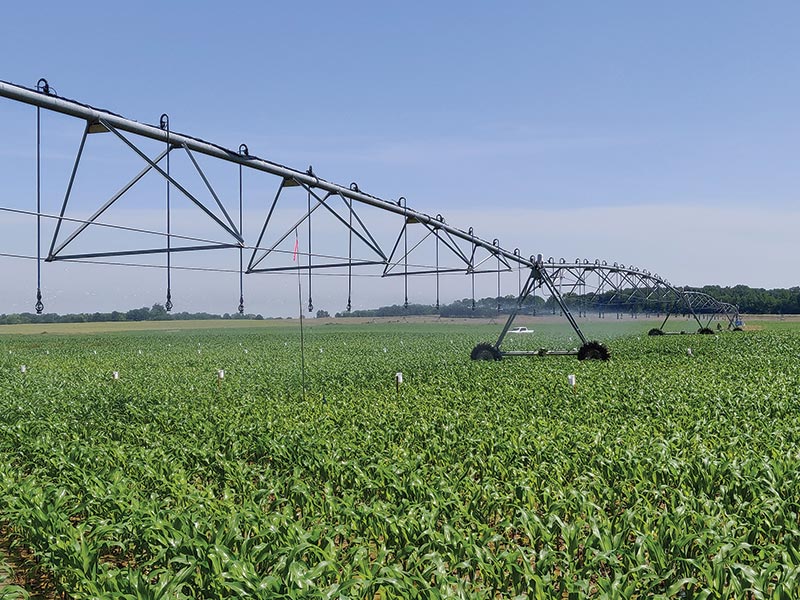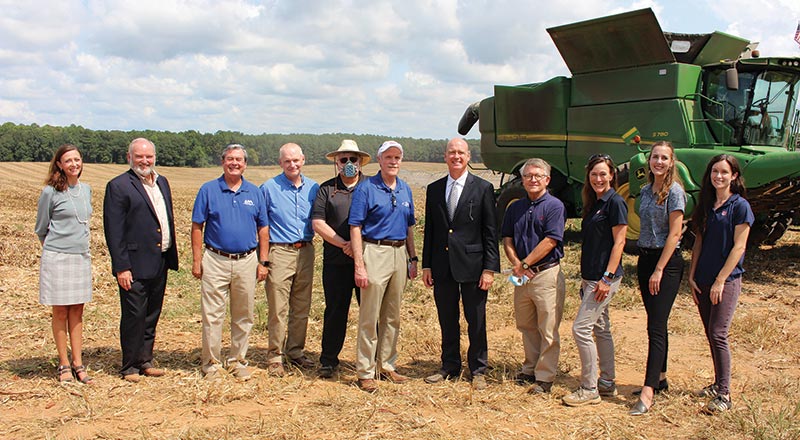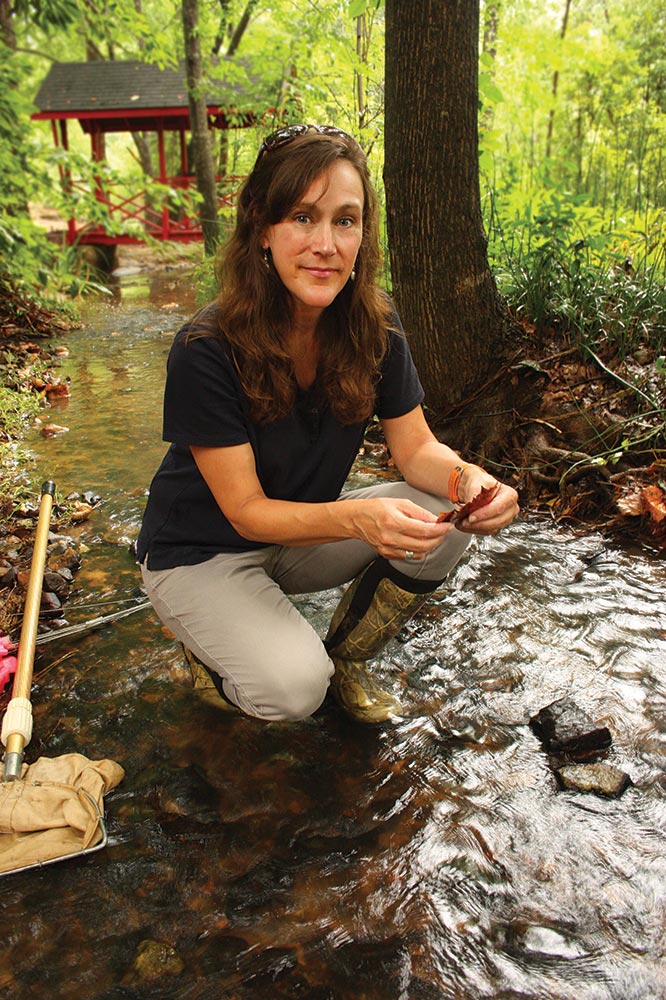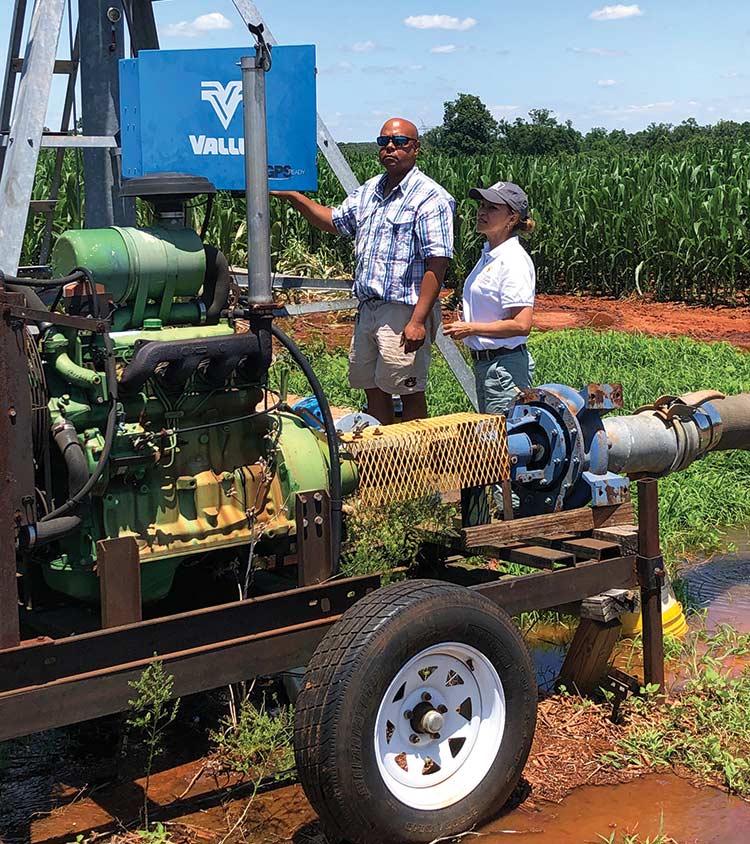Alabama Extension scientists guide smart irrigation expansion
Article body
Alabama farmers plant more than 1.3 million acres of row crops annually, but their use of irrigation to support those crops is one of the lowest in the Southeast. Thanks to scientists with the Alabama Cooperative Extension System at Auburn University and their partners, Alabama farmers can implement sustainable irrigation systems to boost production and minimize year-to-year variability.
Watershed plans developed by Dr. Eve Brantley and the Alabama Extension Water Program provide farmers with critical information on how to implement irrigation without adversely impacting groundwater and surface supplies.
“These plans allow farmers to expand irrigation while minimizing the impacts on the environment, neighbors and nearby communities,” Brantley said. Brantley and her team work closely with USDA’s Natural Resource Conservation Service (NRCS), the Alabama Soil and Water Conservation Committee (AL SWCC) and the State Climatologist Office at the University of Alabama in Huntsville in the Alabama Irrigation Initiative.
Farmers are already using the Middle Tennessee River watershed plan to add new irrigation systems. Brantley said that federal funding up to $200,000 per farmer is available to selected farmers in that watershed. Farmers first apply to the AL SWCC for ranking and then NRCS conducts follow up farm visits as part of the final approval for the financial assistance.
U.S. Sen. Richard Shelby and Congressman Robert Aderholt led the effort to secure the funding.
“Agriculture anchors the Alabama economy. Expanding irrigation technology will help our farmers enhance their bottom line in a sustainable way, bringing economic benefits for the whole state. That’s why I have been proud to champion this initiative in Congress,” Aderholt said.
Dr. William Puckett, executive director of the AL SWCC, echoes the importance of the effort.
“We really are blazing new ground,” Puckett said. “We are using federal funds normally designated for large scale projects to fund new irrigation systems at the farm level.”
Puckett said the initiative will leverage $30 million in federal funds through a cost-share contract with farmers. Underserved farmers will pay 35% themselves while getting 65% of the needed funds through theinitiative; other farmers will get a 50/50 cost share.
Brantley, who is also the director of the Auburn University Water Resources Center, said two more watershed plans are planned as part of the irrigation expansion program.
“The Choctawhatchee Pea watershed plan is in review and approval is anticipated in 2021,” she said. “The Middle Alabama watershed is the next watershed in the irrigation expansion program.”
These watershed plans draw heavily on the research and on-farm demonstrations led by Dr. Brenda Ortiz, Alabama Extension’s precision agriculture specialist.
“The application of the right rate of water at the right location and at the right time and with the most efficient system is crucial to the sustainable expansion of irrigation in the state,” Ortiz said.
Over the last four years, Ortiz and her undergraduate and graduate students established a network of on-farm irrigation demonstration sites across the state.
“We use these sites to engage farmers and demonstrate the technology to implement the four Rs of water management: right rate, right time, right place and right irrigation system,” Ortiz said. “Cutting-edge soil water, crop and weather monitoring technologies at each site remotely indicate changes in soil moisture, weather and crop water stress and growth.”
Additionally, several center pivot irrigation systems have been retrofitted with variable rate technologies so they can apply different irrigation rates over a field instead of the traditional uniform rate application.
“Variable rate irrigation technology will help farmers addressing the over or under-application of water on some parts of crop fields that uniform rate irrigation can’t do,” Ortiz said.
In the summer of 2020 on a Lawrence County field, research results showed yield variability was reduced through the application of the 4Rs concept. For the first time in 10 years, the farmer had uniform yields across the demonstration area and that was the result of the use of soil sensors and variable rate irrigation.
Brantley and Ortiz agree that the combination of new irrigation technologies combined with regional watershed planning improve farmers’ crop production while safeguarding Alabama’s water supplies.





